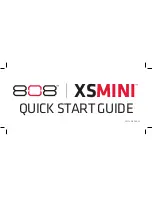
Welcome to the family of Community!
You’ve joined the group of people that have chosen high-quality
Community loudspeaker systems and components for over 30
years. We’re really glad you did and we’ll do our best to make
sure you are satisfied!
In order for you to get the most effective use of this product,
please take a few minutes to read this manual.
Do a quick inspection of the carton and enclosure
Community uses excellent enclosure materials, components,
assembly techniques and quality-control testing to help ensure
you’ll get the best quality product for the money. The packaging
and shipping methods are chosen so the unit arrives in factory-
fresh condition to you. It is possible, however, that something
can happen to the unit on its journey from the factory to you.
Take a little time to carefully inspect the unit. Look for damage
to the carton (rips, tears, punctures, crushed corners, etc.) and to
the unit itself. If you notice a problem, immediately contact your
dealer for assistance.
Wiring up the speaker to your amplifier
You need to use proper cable and good quality connectors for
speaker wiring. Using guitar cords or zip cord (used for table
lamps) may degrade the performance of your loudspeakers. If
your speaker cables will be less than 25' long, 16-gauge (1.5
mm
2
) stranded twisted-pair cable will be adequate. If you need
longer cables, you should use 14- or 12-gauge (2.5 mm
2
or 4
mm
2
) stranded cable. Rubber-jacketed cable is an excellent
choice if you wish to have reliable performance, as this type of
cable will survive hard use and remains flexible even if exposed
to cold. If you’re it is unlikely that people will walk on or heavy
objects will be rolled over the cables you may also use cable with
a vinyl (PVC) jacket. If you decide to go with the rubber-
jacketed cable, ask your supplier for type S, SO, or SJ cable, all
of which will be suitable.
1


































